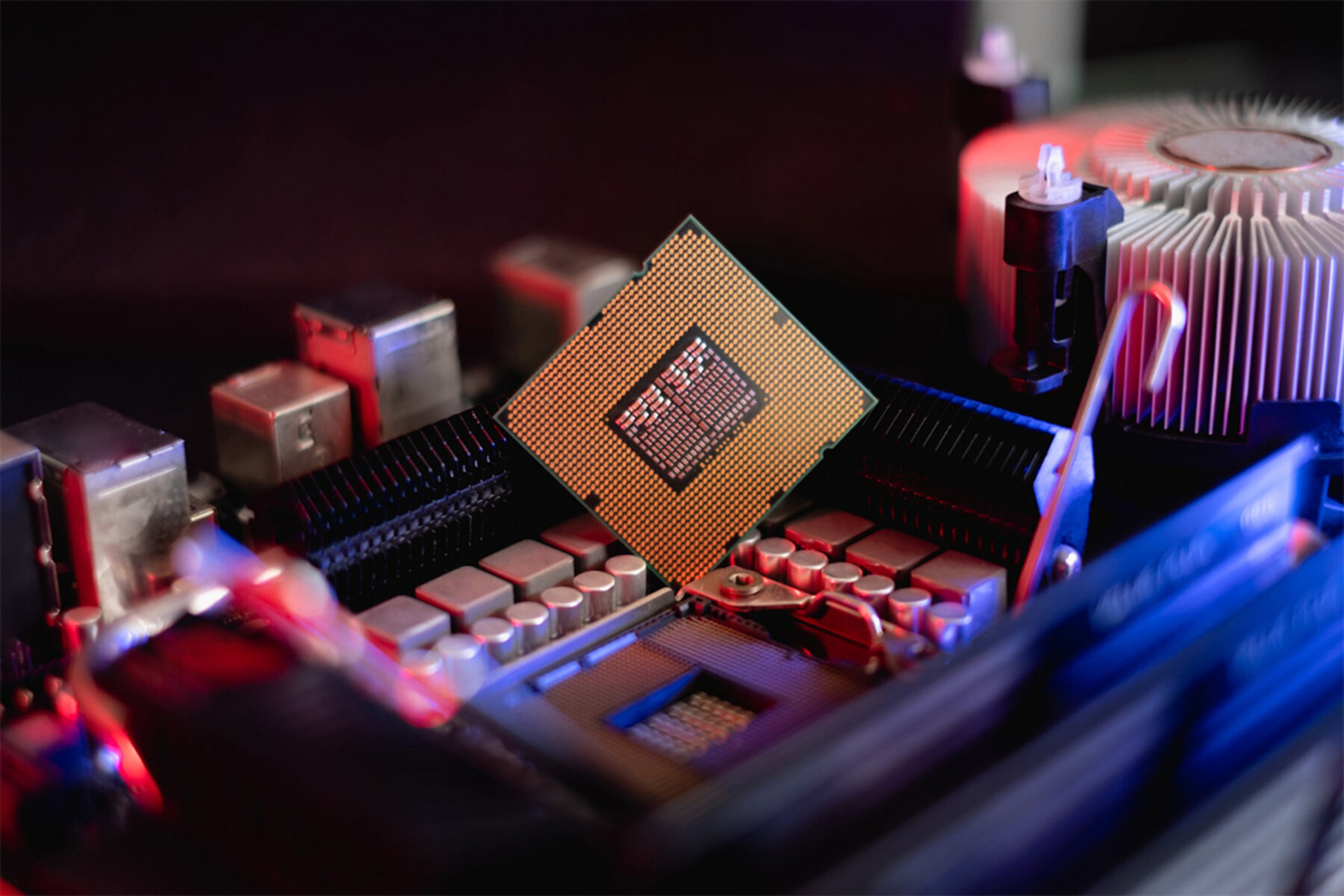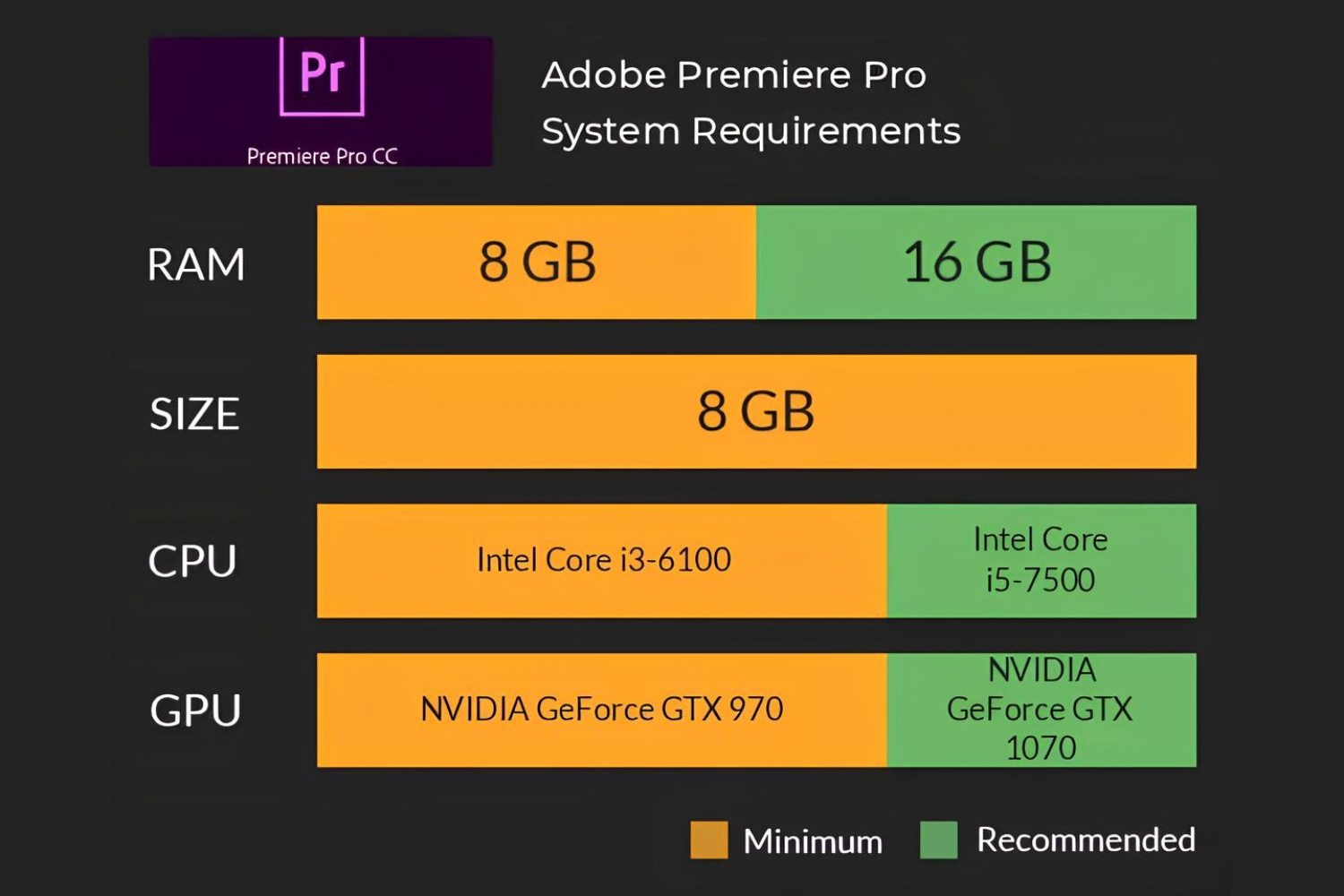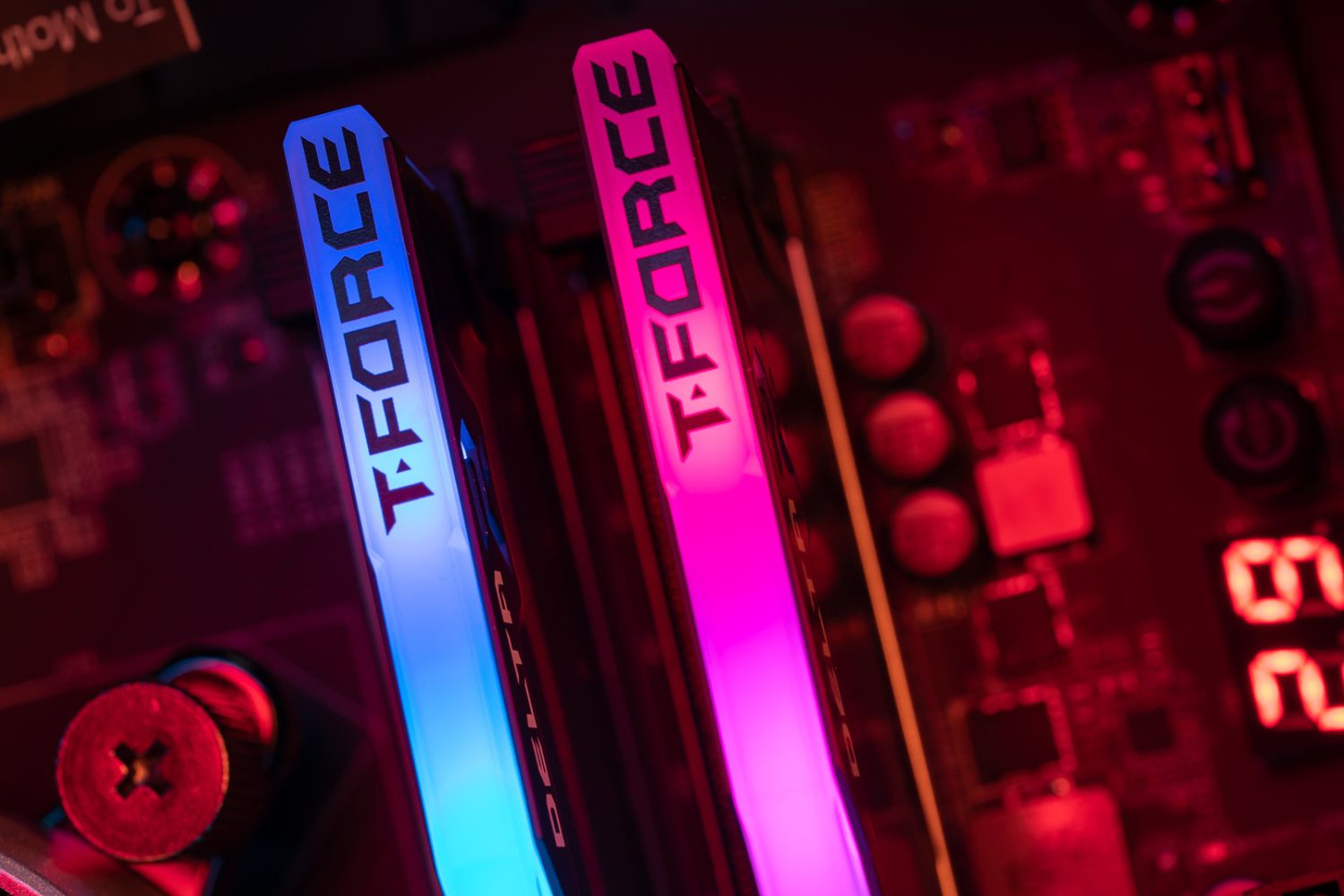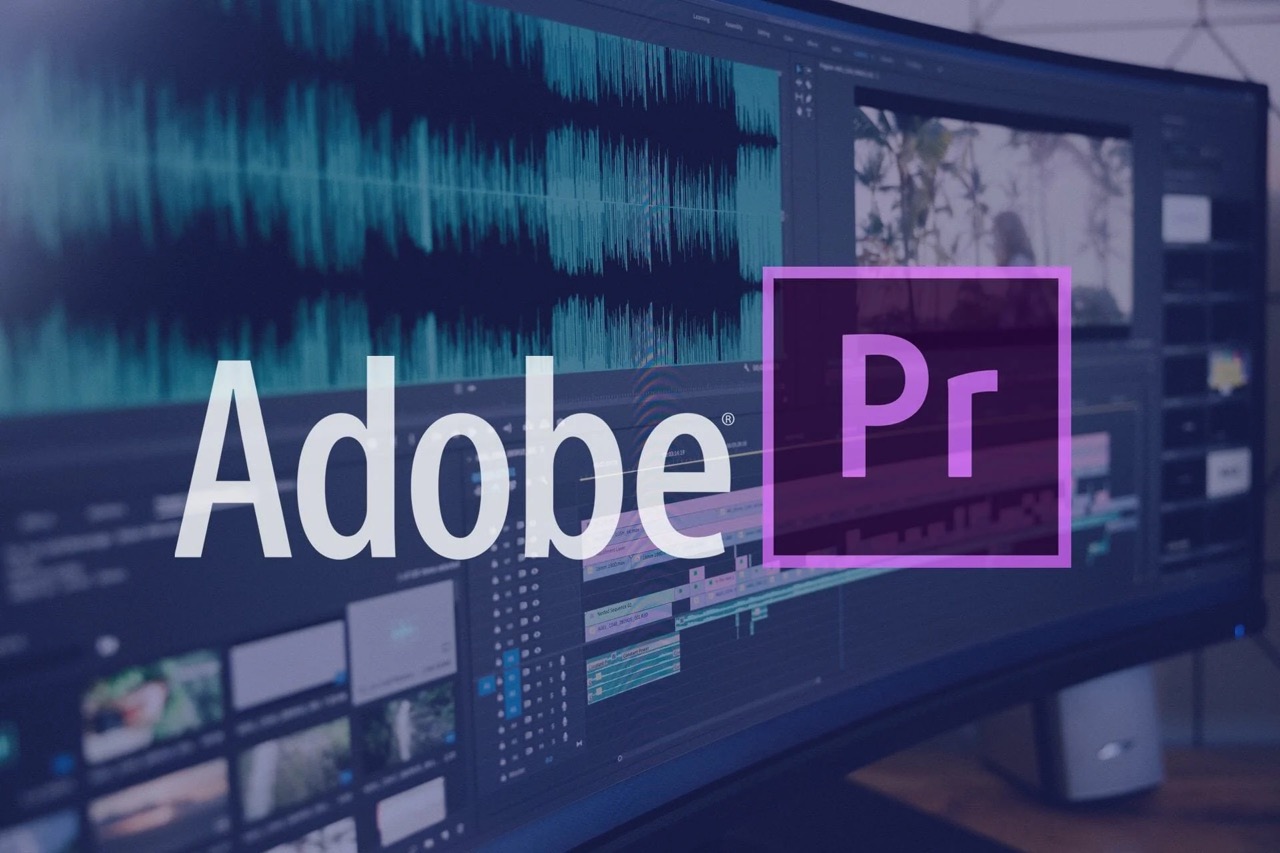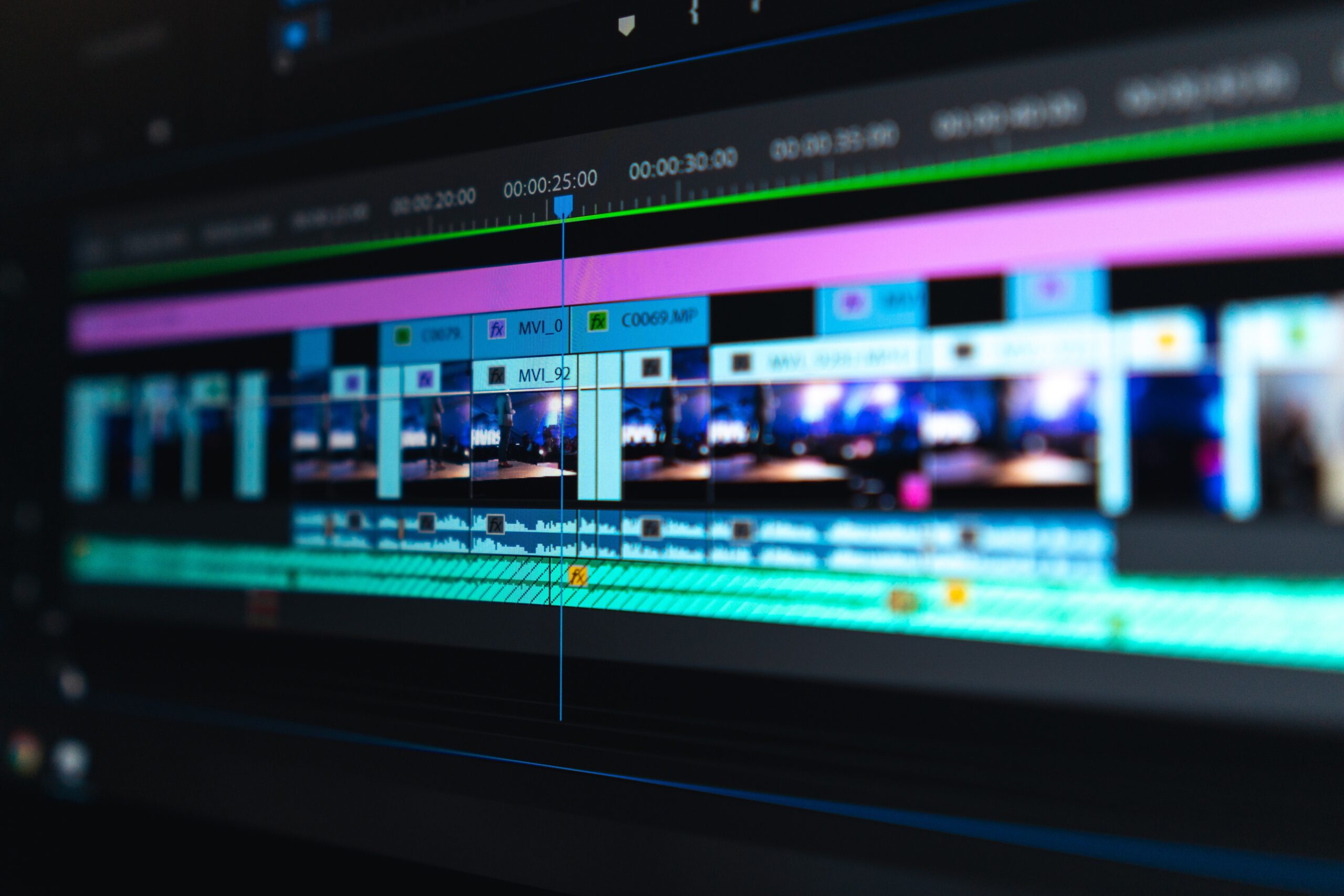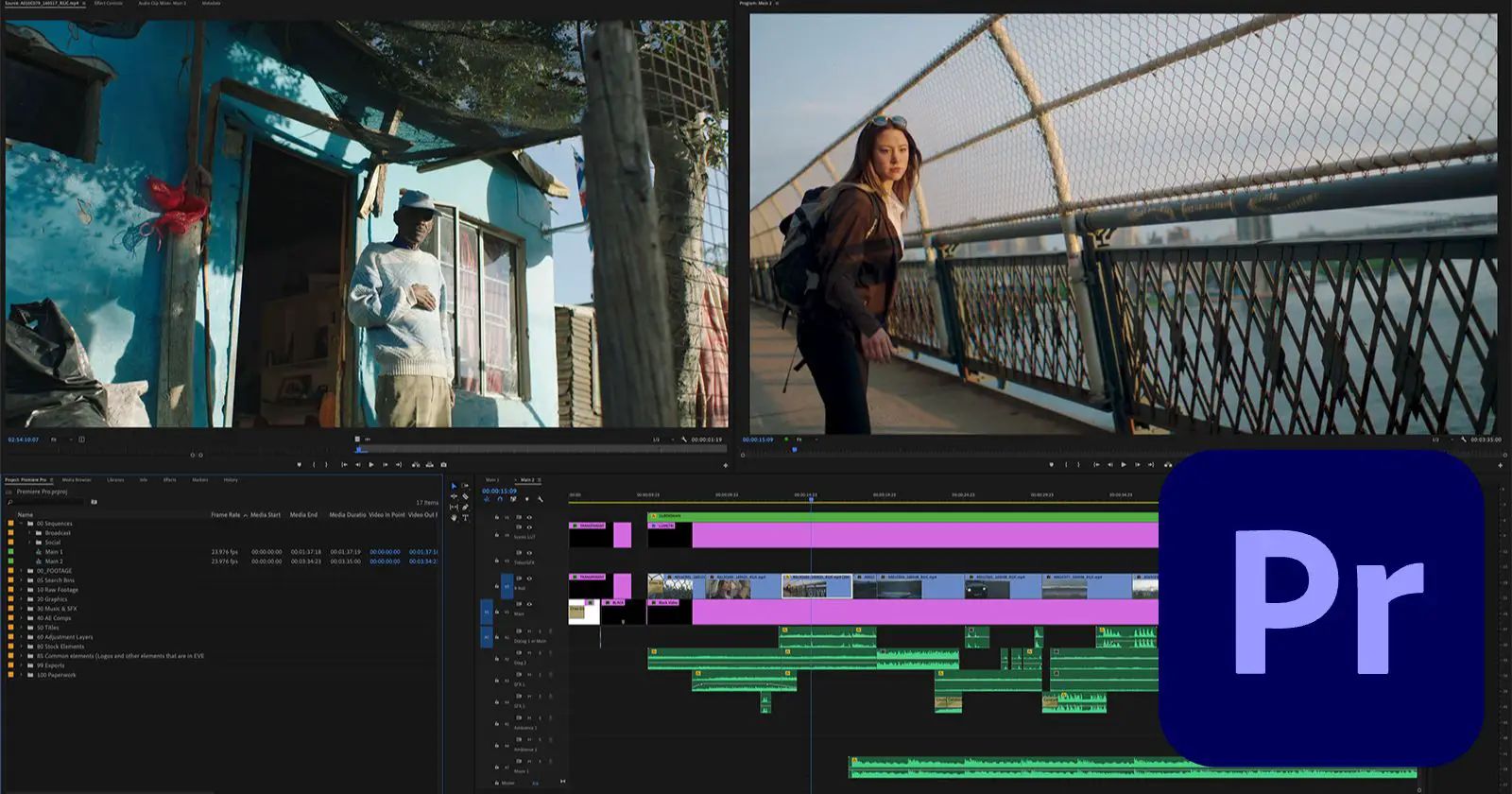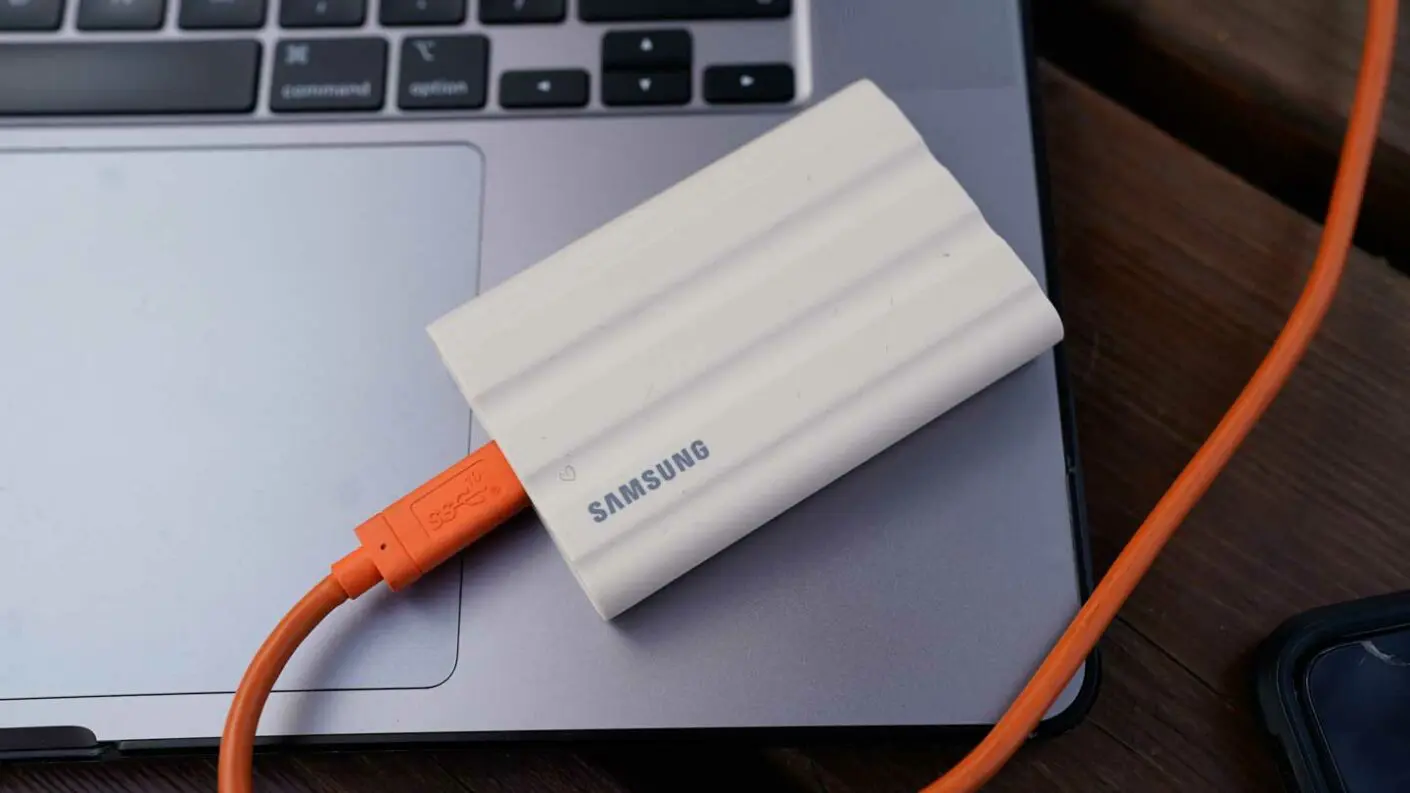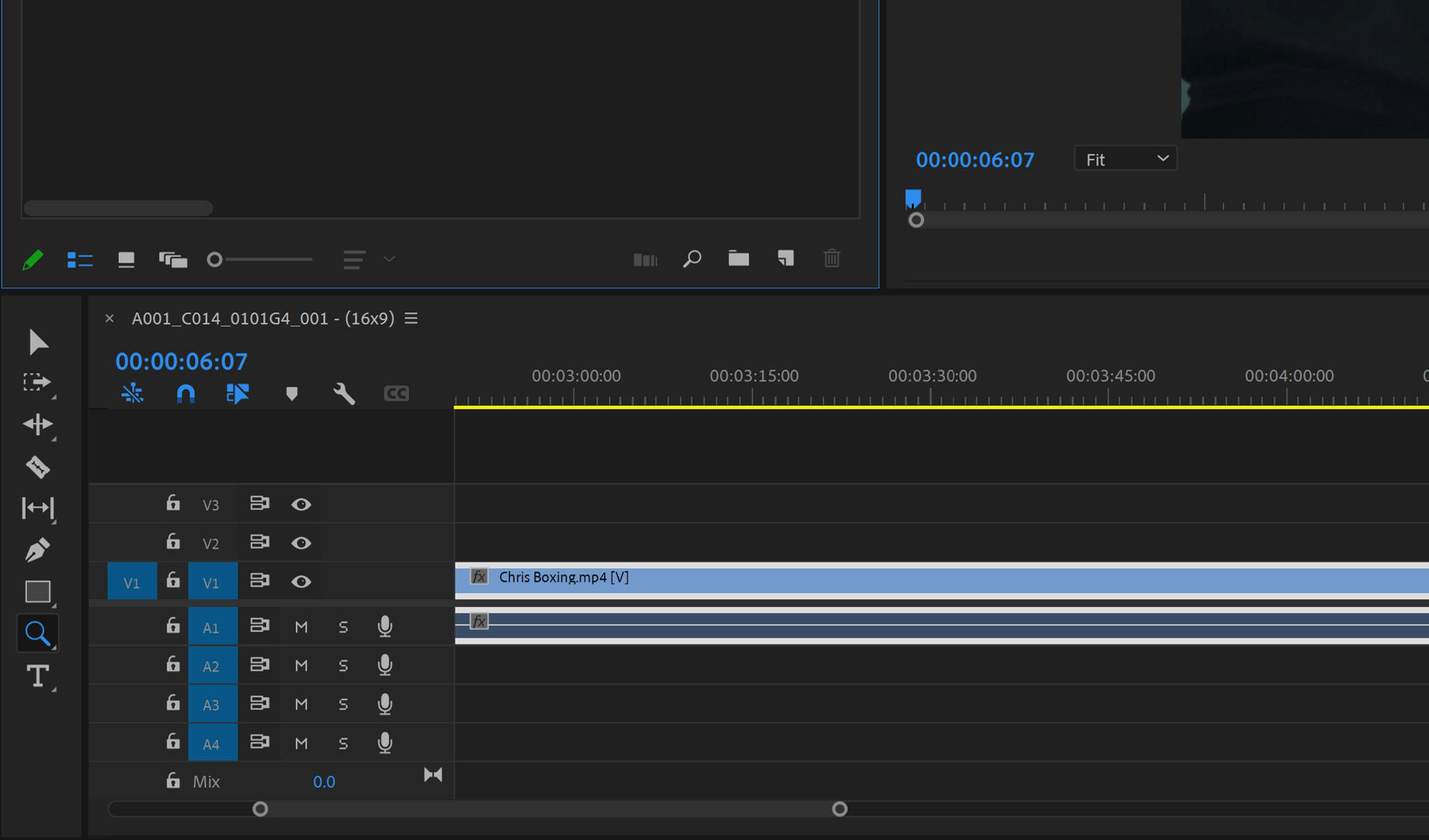Introduction
Welcome to the world of Adobe Premiere Pro, where creativity meets technology to bring your video editing projects to life. As an editing powerhouse, Adobe Premiere Pro demands significant computational resources, and one key component that plays a crucial role in its performance is RAM (Random Access Memory).
RAM serves as a temporary storage for project data that the software needs to access quickly. The more RAM you have, the more efficiently Adobe Premiere Pro can process large media files, apply effects, and handle complex editing workflows. But the question remains: how much RAM do you really need for Adobe Premiere Pro? In this article, we will explore the ideal RAM configuration for optimal performance.
It’s essential to understand that the RAM requirement for Adobe Premiere Pro may vary based on factors such as project complexity, video resolution, effects applied, and the number of tracks in your timeline. The recommended RAM for smooth editing might differ for different users, but we can outline some general guidelines to help you determine the minimum and recommended RAM for your editing needs.
Before diving into the specific RAM requirements, it’s important to note that Adobe provides minimum system requirements for Premiere Pro. However, these minimum requirements are often the bare minimum needed to run the software and may not deliver the performance necessary for efficient editing. Therefore, it’s advisable to aim for a higher RAM capacity than the minimum, especially if you plan to work on more complex projects.
In the following sections, we will explore the ideal RAM configuration for Adobe Premiere Pro, factors that may affect your RAM requirements, how to evaluate your workflow, and tips for optimizing RAM usage. By the end of this article, you will have a better understanding of how much RAM you need to ensure a smooth editing experience in Adobe Premiere Pro.
Understanding RAM in Adobe Premiere Pro
RAM, or Random Access Memory, plays a critical role in the performance of Adobe Premiere Pro. It is the temporary storage space that allows the software to quickly access files, load media, apply effects, and perform other editing tasks. Simply put, RAM acts as a bridge between your computer’s processor and the software, providing the necessary data for smooth and efficient editing workflows.
When you open Adobe Premiere Pro, it loads the project files, media assets, effects, and other components into RAM. This allows the software to have quick access to the data it needs during the editing process. As you add more media files, apply effects, and make adjustments to your timeline, the amount of RAM required increases. If your available RAM is limited, the software might have to rely on virtual memory or the hard drive, which can significantly slow down the editing process.
RAM directly impacts the performance of Adobe Premiere Pro in several ways:
- Speed and Responsiveness: Adequate RAM ensures that the software responds quickly to your commands, making editing a seamless experience without any lag or delays.
- Buffering and Playback: Sufficient RAM helps in buffering and smoothly playing back high-resolution footage, especially when dealing with multi-layered effects or complex sequences.
- Render Times: More RAM allows Adobe Premiere Pro to store more data in memory, reducing the need for frequent rendering and speeding up the overall rendering process for the final output.
It’s worth mentioning that while RAM is crucial, it is not the only determining factor for Adobe Premiere Pro’s performance. Other components, such as the processor, graphics card, storage drive, and software optimizations, also contribute to the overall editing experience. However, having adequate RAM ensures that the software has enough space to operate efficiently and minimizes potential bottlenecks.
Now that we have a better understanding of the importance of RAM in Adobe Premiere Pro, let’s move on to discussing the minimum and recommended RAM requirements for the software.
Minimum and Recommended RAM for Adobe Premiere Pro
When it comes to deciding the RAM configuration for Adobe Premiere Pro, it’s crucial to strike a balance between cost and performance. While there is a minimum requirement recommended by Adobe, it might not provide the best editing experience for most users. Let’s explore the minimum and recommended RAM configurations for Adobe Premiere Pro.
The minimum RAM requirement outlined by Adobe for Premiere Pro is 8GB. However, it’s important to note that this bare minimum may not be sufficient for demanding editing tasks, especially if you work with high-resolution footage, complex effects, and multiple tracks. If you’re using a system with only 8GB of RAM, you may experience frequent lagging, stuttering, and longer render times, which can hinder your editing workflow.
For optimal performance, it is recommended to have at least 16GB of RAM for Adobe Premiere Pro. With 16GB, you can comfortably handle most editing tasks, including working with high-definition footage, applying moderate effects, and multi-layered timelines. This configuration provides a good balance of cost and performance, ensuring a smooth editing experience without breaking the bank.
If you frequently work on more demanding projects, such as 4K or 8K resolution footage, complex visual effects, and heavy multi-track editing, you should consider increasing your RAM capacity further. A recommended RAM configuration for such projects would be 32GB or more. This amount of RAM allows Adobe Premiere Pro to efficiently handle the larger file sizes and the additional processing power required for these tasks. Therefore, if your editing workload involves working with high-resolution content or advanced effects, investing in more RAM is definitely beneficial.
Keep in mind that RAM is just one part of the equation. To fully leverage the benefits of increased RAM, you will need a compatible processor, a dedicated graphics card, and fast storage. These components work in tandem to provide a seamless editing experience in Adobe Premiere Pro.
In the next section, we will explore the various factors that can influence the RAM requirement for Adobe Premiere Pro, helping you make an informed decision about your editing setup.
Factors Affecting RAM Requirement in Adobe Premiere Pro
While there are minimum and recommended RAM configurations for Adobe Premiere Pro, the actual RAM requirement can vary depending on several factors. Understanding these factors will help you determine the optimal amount of RAM needed for your specific editing needs. Let’s explore some of the key factors that can influence the RAM requirement in Adobe Premiere Pro.
1. Project Complexity: The complexity of your editing projects plays a significant role in determining the RAM requirement. Projects with multiple video tracks, complex effects, and numerous transitions will require more RAM to handle the computational load efficiently. If you frequently work on complex projects, consider increasing your RAM capacity to ensure smooth playback and editing.
2. Video Resolution: The resolution of your footage also impacts the RAM requirement. Higher-resolution footage, such as 4K, 6K, or 8K, requires more RAM to process and display smoothly. When working with high-resolution content, it’s important to have sufficient RAM to avoid sluggish performance and choppy playback.
3. Effects and Transitions: Applying effects and transitions to your footage can significantly increase the RAM usage in Adobe Premiere Pro. Complex effects like motion tracking, color grading, and visual effects require more memory to render and preview in real-time. If you frequently use such effects, it’s advisable to have a higher RAM capacity.
4. Number of Tracks: The number of video and audio tracks in your timeline also affects the RAM requirement. Adding multiple tracks of media increases the overall processing load on your system, and sufficient RAM is necessary to manage this efficiently. If you work with several tracks simultaneously, consider upgrading your RAM.
5. Simultaneous Software Usage: If you frequently use other resource-intensive software alongside Adobe Premiere Pro, such as After Effects or Photoshop, it’s important to account for the additional RAM requirements of these programs as well. Running multiple software simultaneously can place a heavy load on your system’s resources, including RAM.
6. Operating System and Software Preferences: The RAM requirement can also vary depending on the operating system you are using and the specific preferences and settings within Adobe Premiere Pro. Different operating systems and software versions may have varying memory management techniques and optimizations, which can influence the overall RAM usage.
By considering these factors, you can assess the RAM requirement more accurately and make informed decisions when configuring your editing system. In the next section, we will discuss how to evaluate your specific workflow to determine the optimal RAM configuration for your editing needs.
Evaluating Your Workflow
Before determining the ideal RAM configuration for Adobe Premiere Pro, it’s important to evaluate your specific editing workflow. By assessing your workflow, you can gain insights into the demands your projects place on your system and make informed decisions about your RAM requirements. Here are some key steps to evaluate your editing workflow:
1. Review Project Types: Consider the types of projects you typically work on. Are they short videos, documentaries, feature films, or commercials? Different project types can have varying complexities, durations, and requirements. Analyzing the nature of your projects will help you gauge the amount of RAM needed for smooth editing.
2. Analyze Footage Characteristics: Examine the typical resolution, frame rate, and codec of your footage. Higher-resolution footage, such as 4K or 8K, requires more memory to handle efficiently. Similarly, using codecs that are more computationally intensive, like RAW or ProRes, can increase the RAM requirements. Understanding your footage characteristics will give you an idea of the RAM capacity you’ll need to work with them seamlessly.
3. Consider Effects and Transitions: Take into account the types and complexity of effects and transitions you commonly use in your projects. Effects like motion tracking, stabilization, and color grading can demand significant processing power and RAM. If you heavily rely on these effects, it’s advisable to allocate more RAM to ensure smooth playback and real-time rendering.
4. Assess Timeline Complexity: Evaluate the number of tracks, layers, and clips you usually work with in your timelines. Projects with more tracks and layers require additional RAM to process and display in real-time. If you tend to work with complex timelines, increasing your RAM capacity will help maintain smooth playback and editing responsiveness.
5. Identify Workflow Bottlenecks: Examine any performance bottlenecks you encounter during your editing process. Are you experiencing playback issues, long render times, or frequent software crashes? These bottlenecks could indicate a need for increased RAM. Identifying these issues will help you identify whether your current RAM capacity is sufficient or if an upgrade is necessary.
By evaluating your workflow based on these factors, you can gain a deeper understanding of your editing needs and make an informed decision about the RAM configuration that best suits your requirements. Remember, it’s always better to have more RAM than the minimum requirements to ensure a smooth and efficient editing experience.
In the next section, we will explore the recommended RAM configurations for different editing tasks to provide you with more specific guidance.
Recommended RAM for Different Editing Tasks in Adobe Premiere Pro
Considering the different editing tasks you may undertake in Adobe Premiere Pro, it’s important to have the appropriate RAM configuration to ensure smooth and efficient performance. While the exact RAM requirement for each task can vary depending on other factors, such as project complexity and footage characteristics, we can provide some general recommendations to guide you. Here are the recommended RAM configurations for different editing tasks in Adobe Premiere Pro:
1. Basic Editing: If you primarily work on basic editing tasks, such as cutting and trimming footage, adding simple transitions, and applying minor adjustments, a minimum of 16GB of RAM is recommended. This amount of RAM will provide sufficient resources to handle these tasks without significant performance issues.
2. HD and Full HD Editing: For editing projects involving high-definition (HD) footage with resolutions up to 1080p, it is recommended to have at least 16GB to 32GB of RAM. HD video editing often involves working with multiple video and audio tracks, adding effects, and performing color grading. Having a higher RAM capacity will ensure smooth playback and responsiveness.
3. 4K and 8K Editing: If you work extensively with 4K or 8K resolution footage, it’s advisable to have a minimum of 32GB to 64GB of RAM. Working with higher-resolution media places a significant demand on your system’s memory. With increased RAM, you can handle the larger file sizes and process complex effects and transitions more efficiently.
4. Multi-Cam Editing: When working with multi-camera projects, where you sync and switch between multiple camera angles, it is recommended to have a minimum of 32GB of RAM. Multi-cam editing requires additional processing power and memory to handle the simultaneous playback of multiple video streams. Sufficient RAM ensures smooth real-time editing and playback.
5. Visual Effects and Color Grading: If you frequently work with visually intensive effects, such as motion graphics, visual effects, and color grading, it’s advisable to have a minimum of 32GB to 64GB of RAM. These tasks often involve real-time previewing and rendering of complex visual elements, which require substantial memory resources for smooth playback and responsiveness.
It’s important to note that these recommendations serve as a general guideline, and the specific RAM requirement for your editing tasks may vary. The complexity of your projects, the number of tracks and effects used, and the overall system configuration will impact the RAM requirements. To optimize performance, consider allocating additional RAM if you frequently encounter performance issues or if you work with larger, more demanding projects.
In the next section, we will provide some valuable tips for optimizing RAM usage in Adobe Premiere Pro, helping you make the most of your available memory resources.
Tips for Optimizing RAM Usage in Adobe Premiere Pro
Optimizing RAM usage in Adobe Premiere Pro is essential to ensure smooth performance and efficient editing workflows. By implementing the following tips, you can make the most of your available RAM and maximize the software’s capabilities:
1. Close Unnecessary Applications: Before launching Adobe Premiere Pro, close any unnecessary applications running in the background. This frees up system resources and allows more RAM to be allocated to the editing software, enhancing its performance.
2. Allocate RAM Usage in Preferences: Within Adobe Premiere Pro’s preferences, you have the option to customize the allocated RAM usage. Go to Edit > Preferences > Memory and adjust the “RAM Reserved for Other Applications” setting. It is recommended to leave a portion of RAM available for other processes to prevent system instability.
3. Enable GPU Acceleration: Utilize your system’s Graphics Processing Unit (GPU) for accelerated rendering and effects. Enabling GPU acceleration offloads some processing tasks from RAM, improving overall performance and reducing the strain on system memory.
4. Optimize Preview Files: Configure Adobe Premiere Pro to generate and use optimized preview files. These files are smaller in size, reducing the RAM usage during playback. Make sure to regularly clear the cache and delete unnecessary preview files to free up additional disk space and improve performance.
5. Work with Proxies: If you struggle with limited RAM capacity, working with proxies can significantly improve editing performance. Creating low-resolution proxy files allows the software to work with smaller file sizes, reducing RAM requirements while maintaining real-time playback and editing capabilities. Once editing is complete, you can switch back to the high-resolution files for rendering.
6. Trim and Consolidate Media: Before importing media files into Adobe Premiere Pro, trim unnecessary portions and consolidate multiple video clips into a single file. This minimizes the number of assets the software needs to process, reducing RAM usage and enhancing performance.
7. Optimize Effects and Transitions: Carefully select and optimize the effects and transitions applied to your footage. Using too many resource-intensive effects can significantly impact RAM usage. Consider using simpler effects or rendering sections with complex effects to minimize the demand on system memory.
8. Update Adobe Premiere Pro: Regularly update your Adobe Premiere Pro software to the latest version. Updates often include performance optimizations and bug fixes that can enhance RAM utilization and overall stability.
Remember, the optimal RAM usage depends on your specific editing tasks and system configuration. Monitor the RAM usage in real-time using Adobe Premiere Pro’s performance monitoring tools and adjust your workflow and settings accordingly for optimal performance.
Implementing these tips will help you optimize RAM usage in Adobe Premiere Pro and create a smoother editing experience. Now that you have a better understanding of RAM optimization, let’s conclude the article with a summary of the key points discussed.
Conclusion
RAM plays a vital role in the performance of Adobe Premiere Pro, impacting its speed, responsiveness, and overall editing capabilities. We have explored the importance of RAM in Adobe Premiere Pro, the minimum and recommended RAM configurations, factors affecting RAM requirements, evaluating your editing workflow, and tips for optimizing RAM usage.
When determining the ideal RAM configuration for Adobe Premiere Pro, it’s crucial to consider factors such as project complexity, video resolution, effects usage, number of tracks, and other simultaneous software usage. Evaluating your workflow helps you make informed decisions about the RAM capacity needed to ensure smooth and efficient editing processes.
For basic editing tasks, a minimum of 16GB of RAM is recommended, while 32GB to 64GB or more is ideal for working with higher resolutions, multi-cam projects, and demanding visual effects. However, these recommendations may vary depending on your specific needs and system capabilities.
To optimize RAM usage in Adobe Premiere Pro, it is important to close unnecessary applications, allocate RAM usage in preferences, enable GPU acceleration, optimize preview files, work with proxies, trim and consolidate media, optimize effects and transitions, and keep your software up to date.
By considering these recommendations and implementing the suggested tips, you can make the most of your available RAM and enhance the performance and efficiency of Adobe Premiere Pro.
Remember, RAM is just one aspect of a well-optimized editing system. It’s important to have a balanced configuration that includes a compatible processor, a capable graphics card, and fast storage to achieve the best editing experience in Adobe Premiere Pro.
We hope this article has provided valuable insights into RAM usage in Adobe Premiere Pro and empowered you to make informed decisions when configuring your editing setup. Now, armed with this knowledge, go ahead and create amazing videos with confidence!







